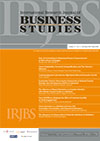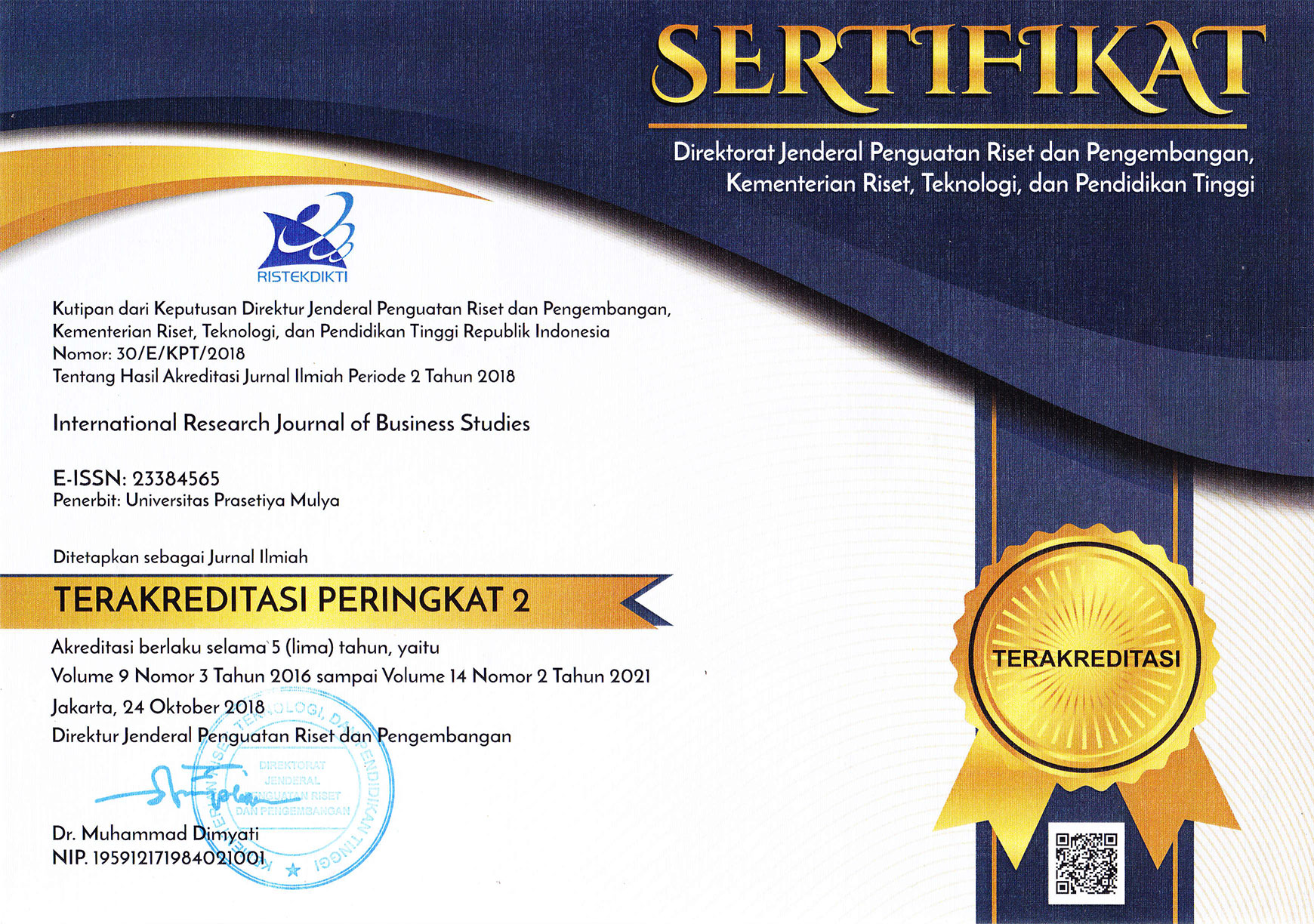The Adequacy of Cybersecurity in Financial Institutions in Zimbabwe
DOI:
https://doi.org/10.21632/irjbs.17.3.317-331Keywords:
Cybersecurity, Cybercrime, Banking, ZimbabweAbstract
A well-protected cyber environment is virtually non-existent in the technical landscape of the 21st century, exposing financial institutions to risk. To preserve the well-being and trust of the public within financial systems, the financial sector needs a stable and robust cybersecurity system. This study sought to determine the causes and sources of cybercrime, the degree to which banks are aware of cybercrime, and to assess their understanding of cybersecurity and possible solutions to cyber threats. A sample of five commercial banks in Zimbabwe was surveyed and data was analyzed using descriptive statistics. Findings revealed low awareness of cybersecurity, the absence of anti-virus protection, and a cybersecurity framework. Further, the study established that financial institutions are not providing adequate financial support and training relating to cybersecurity. The study recommends investment in cybersecurity, training, and awareness campaigns to cultivate a culture of cyber alertness.
References
Akinbowale, O. E., Klingelhöfer, H. E., & Zerihun, M. F. (2023). The assessment of the impact of cyber fraud in the South African banking industry. Journal of Financial Crime.
Mohsin, A. (2016). A manual for selecting sampling techniques in research. Munich Personal
RePEC Archive, 2016, 1-56.
BBC News, (2016). http//www.bbc.co.uk/news/technology-36072240.
Baur-Yazbeck, S., Frickenstein, J., & Medine, D. (2019). Cyber Security in the Financial
Sector Development. CGAP Background Documents, 5(2).
Bulawayo24: Italy offers cyber security training in Zimbabwe. 2021, April 18.
Camilo, M. (2017). Cybersecurity: Risks and management of risks for global banks and
financial institutions. Journal of Risk Management in Financial Institutions, 10(2), 196-200.
Catota, F., Morgan, M. & Sicker, D. (2018). Cybersecurity incident response capabilities in
the Ecuadorian financial sector. Journal of Cybersecurity, 4(1), tyy002.
Chakkaravarthy, S, Sangeetha, M., & Vaidehi, V. (2018). Futuristic cyber-attacks, International
Journal of Knowledge-based and Intelligent Engineering Systems. 22(3), 195-204.
Chingoriwo, T. (2022). Cybersecurity Challenges and Needs in The Context of Digital
Development in Zimbabwe. British Journal of Multidisciplinary and Advanced Studies, 3(2), 77-104.
Dongol, R. (2019). Robust Security Framework for Mitigating Cyber Threats in Banking
Payment System, Research Journal of Science, Technology and Management, 1.
Dzomira, S. (2014). Electronic fraud (cyber fraud) risk in the banking industry, Zimbabwe,
Risk Governance and Control: Financial Markets and Institutions, 4(2), 16-26.
Dzomira, S. (2015). Cyber-banking fraud risk mitigation conceptual model, Banks and Bank
Systems, 10 (2), 7-14.
Dzomira, S. (2017). Internet banking fraud alertness in the banking sector: South Africa,
Banks and Bank Systems, 12(1),143-151.
Hejase, H. Fayyad-Kazan H, & Hejase A, (2021). Cyber Security amid COVID-19.
Computer and Information Science. 14(2), 10-25.
Jongbo, O. C. (2014). The role of research design in a purpose-driven inquiry. Review of
Publication Administration and Management, 3(6), 87-94.
Kabanda, G., & Chingoriwo, T. (2021). A Cybersecurity Culture Framework For Grassroots
Levels In Zimbabwe. Https://Www.Researchgate.Net/Profile/Gabriel-Kabanda/publication/359651454_A_Cybersecurity_Culture_Framework_for_Grassroots_Levels_in_Zimbabwe/links/626ba5106a39cb1180e3c46e/A-Cybersecurity-Culture-Framework-for-Grassroots-Levels-in-Zimbabwe.pdf.
Kabanda, G. (2018). A Cybersecurity culture framework and its impact on Zimbabwean
organizations. Asian Journal of Management, Engineering & Computer Science, 3(4), 17-34.
Kshetri, N. (2019). Cybercrime and Cybersecurity in Africa. Journal of Global Information
Management Technology, 22(2), 77-81. DOI: 10.1080/1097198X.2019.1603527.
Kshetri, N. (2013). Cybercrime and cybersecurity in the global South. Basingstoke, U.K:
Palgrave Macmillan: Houndmils.
KPMG, (2020). Cybercrimes: A Financial Sector Review. Government and Public Sector.
Available at: https://www.kpmg.com/in/en/industry/publications/fs_cybercrime_booklet.pdf
[Accessed 18 March 2021].
Kurebwa, J., & Tanhara, J. R. (2020). Cybercrime as a Threat to Zimbabwe's Peace and
Security. In Cyber Warfare and Terrorism: Concepts, Methodologies, Tools, and Applications, 1107-1122, IGI Global.
Magweregwede, J., (2014). An evaluation of the adequacy of cyber security within the
Zimbabwean banking sector. Risk governance & control: financial markets & Institutions, 4.
Maphosa, V. (2023). An overview of cybersecurity in Zimbabwe’s financial services
sector. F1000Research, 12, 1251.
Mwila, K. A. (2020). An Assessment of Cyber Attacks Preparedness Strategy for Public and
Private Sectors in Zambia (Doctoral dissertation, The University of Zambia). https://dspace.unza.zm/server/api/core/bitstreams/e7fecda3-7f89-4dbb-970b-9db11121d5fb/content.
Mugari, I. (2016). Cybercrime- The emerging threat to the financial services sector in
Zimbabwe, Mediterranean Journal of Social Sciences, 7(3).
Mutanda, B., & Chrispen, M. (2023). Towards a Cyber Resilient Banking System:
Effectiveness of Cyber Fraud Risk Management Strategies Adopted by Commercial Banks in Zimbabwe. Studies And Scientific Research Economics Edition, (37).
Mutunhu, B., Dube, S., Ncube, N., & Sibanda, S. (2022). Cyber Security Awareness and
Education Framework for Zimbabwe Universities: A Case of National University of Science and Technology. In Proceedings of the International Conference on Industrial Engineering and Operations Management Nsukka, Nigeria, 5-7.
Nurse, J.R., (2019). Cybercrime and you: how criminals attack and the human factors that they
seek to exploit. In: Attrill-Smith A, Fullwood C, Keep M, et al. (eds) The Oxford Handbook of Cyberpsychology. Oxford: Oxford University Press.
Ombati, E, (2017). Evaluation of cybersecurity strategies used in combating banking fraud in
the banking industry in Kenya. International Journal of Innovative Finance and Economics Research 5(4):12-22. Seahi Publications.
Rawass, J. (2019). Cybersecurity strategies to protect information systems in small financial
institutions. Walden University Scholar Works. Dissertations and Doctoral Studies Collection https://scholarworks.waldenu.edu/cgi/viewcontent.cgi?article=8462&context=dissertations.
Raghavana, A.R., Parthiban, L. (2014). The effect of cybercrime on a Bank’s finances,
International Journal of Current Research & Academic Review, 2(2), pp. 173 178.
Ramadani, S., Siahaan, A.P.U., Sutrisno, R.S., Amelia, W.R., Dalimunthe, H. and Munthe, R. (2018). Impact of cybercrime on technological and financial developments, International Journal for Innovative Research in Multidisciplinary Field, 4(10), 341-344.
Reserve Bank of Zimbabwe. (2015). Cybercrime in Zimbabwe and Globally, Harare: Reserve
Bank of Zimbabwe.
Sviatun, O., Goncharuk, O., Roman, C., Kuzmenko, O., & Kozych, I. V. (2021). Combating
cybercrime: economic and legal aspects. WSEAS Transactions on Business and Economics, 18, 751-762.
Tam, LE & Chau, Nguyen & Mai, Pham & Phuong, Ngo & Tran, Vu. (2020). Cybercrimes in
the banking sector: Case study of Vietnam. International Journal of Social Science
and Economics Invention. 6. 10.23958/ijssei/vol06-i05/207.
Tariq, N. (2018). Impact of cyberattacks on financial institutions. Journal of Internet Banking
and Commerce, 23(2), 1-11.
Tiwari, M., (2017). Intrusion detection system. International Journal of Technical Research
and Applications, 5, 38-44.
Tiwari, S., Bhalla, A. and Rawat, R. (2016). Cybercrime and security, International of
Advanced Research on Computer Science and Software Engineering, 6 (4), 46-52.
The United Nations, Cyberspace and International Peace and Security, (2017) Available at:
https://www.unidir.org/files/publications/pdfs/the-united-nations-cyberspace-and-international-peace-and-security-en-691.pdf /[Accessed 12 January 2021].
The Herald, (2017). Man hacks into OK Zim system, and steals $70k. [Online] Available at:
http://www.herald.co.zw/man-hacks-into-ok-zim-system-steals-70k/ [Accessed 12 June 2020].
Ekong, E. U. (2023). Impact of Cyber-Security on Financial Fraud in Commercial Banks in
Nigeria: A Case Study of Zenith Banks in Abuja (Doctoral dissertation, AUST).https://repository.aust.edu.ng/xmlui/bitstream/handle/123456789/5117/Ekong%20Eyo%20Unwana.pdf?sequence=1&isAllowed=y.
Weforum: Global Cybersecurity Outlook 2022.
https://www3.weforum.org/docs/WEF_Global_Cybersecurity_Outlook_2022.pdf.
Wang, V. Nnaji, H and Jung, J., (2020). Internet banking in Nigeria: Cybersecurity breaches,
practices and capability. International Journal of Law, Crime and Justice
Downloads
Submitted
Accepted
Published
How to Cite
Issue
Section
License
Copyright (c) 2024 Margaret Mashizha, Pestalos Kanengoni (Author)

This work is licensed under a Creative Commons Attribution-ShareAlike 4.0 International License.
Journal Author(s) Rights
For IRJBS to publish and disseminate research articles, we need publishing rights (transferred from the author(s) to the publisher). This is determined by a publishing agreement between the Author(s) and IRJBS. This agreement deals with the transfer or license of the copyright of publishing to IRJBS, while Authors still retain significant rights to use and share their own published articles. IRJBS supports the need for authors to share, disseminate and maximize the impact of their research and these rights, in any databases.
As a journal Author, you have rights to many uses of your article, including use by your employing institute or company. These Author rights can be exercised without the need to obtain specific permission. Authors publishing in IRJBS journals have comprehensive rights to use their works for teaching and scholarly purposes without needing to seek permission, including:
- use for classroom teaching by Author or Author's institution and presentation at a meeting or conference and distributing copies to attendees;
- use for internal training by the author's company;
- distribution to colleagues for their research use;
- use in a subsequent compilation of the author's works;
- inclusion in a thesis or dissertation;
- reuse of portions or extracts from the article in other works (with full acknowledgment of the final article);
- preparation of derivative works (other than commercial purposes) (with full acknowledgment of the final article);
- voluntary posting on open websites operated by the author or the author’s institution for scholarly purposes,
(But it should follow the open access license of Creative Common CC-by-SA License).
Authors/Readers/Third Parties can copy and redistribute the material in any medium or format, as well as remix, transform, and build upon the material for any purpose, even commercially. Still, they must give appropriate credit (the name of the creator and attribution parties (authors' detail information), a copyright notice, an open access license notice, a disclaimer notice, and a link to the material), provide a link to the license, and indicate if changes were made (Publisher indicates the modification of the material (if any) and retain an indication of previous modifications.
Authors/Readers/Third Parties can read, print and download, redistribute or republish the article (e.g. display in a repository), translate the article, download for text and data mining purposes, reuse portions or extracts from the article in other works, sell or re-use for commercial purposes, remix, transform, or build upon the material, they must distribute their contributions under the same license as the original Creative Commons Attribution-ShareAlike (CC BY-SA).
This work is licensed under a Creative Commons Attribution-ShareAlike 4.0 International License.








